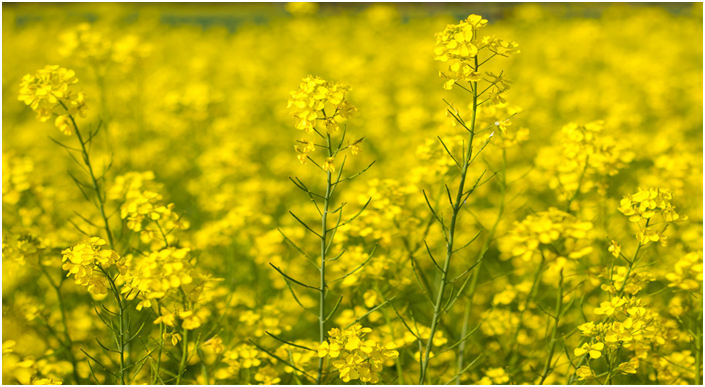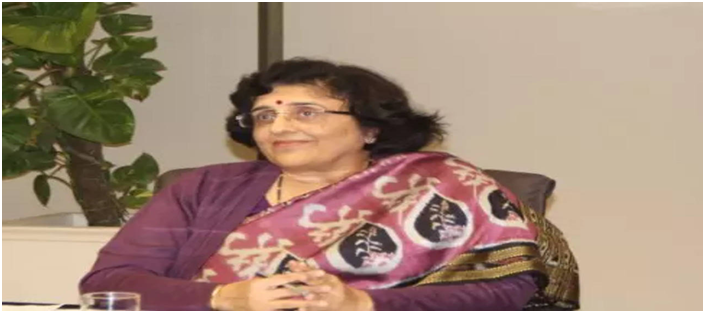Australia approves commercial release of GM variety of Indian mustard (GS Paper 3, Environment)

Why in news?
- Even as India awaits clearance of genetically modified mustard, the regulatory authority in Australia approved the commercial cultivation of the genetically modified Indian mustard species called ‘Brassica juncea’ for herbicide tolerance a few weeks ago.
- This is for the first time a genetically modified variety of Indian mustard has received commercial approval anywhere in the world.
GM Canola:
- So far, the canola (Brassica napus) is perhaps the only genetically modified mustard variety that has been cleared for commercial application.
- GM canola has been in cultivation since 1996 in several countries across the world including Canada, the USA, and even in Australia. Canola is a temperate species of mustard.
Indian mustard:
- The approval has been granted to BASF Australia to commercially release the Indian mustard genetically modified for herbicide tolerance across all of Australia, subject to restrictions in some states and territories for marketing reasons.
- At present, Indian mustard varieties are commercially cultivated in a very small part of Australia, mainly in Central New South Wales and western Victoria.
- The regulator has not imposed any specific measures to manage risk, as the risk assessment concluded that this release of GM Indian mustard poses negligible risk to the health and safety of people or the environment.
How Indian GM mustard variety will work?
- GM Indian mustard variety RF3 contains bar gene from Streptomyces hygroscopicus that impart tolerance to herbicide glufosinate whereas barstar gene from Bacillus amyloliquefaciens (a species of bacterium in the genus Bacillus) for restoration of male fertility, and has been developed by crossing non-GM Indian mustard with GM canola, already approved and cultivated successfully on large scale in Australia since 2003.
- New GM Indian mustard genetically modified for tolerance to Glufosinate Ammonium is approved for commercial cultivation in all mustard growing areas of Australia.
About Brassica juncea:
- India is a major producer of ‘Brassica juncea’ variety of mustard, it has been evaluating the biosafety and field efficacy of GM mustard for almost 20 years now.
- The indigenous GM mustard variety has been developed by Deepak Pental and a team of scientists at University of Delhi and funded entirely by National Dairy Development Board and Department of Biotechnology, India.
NASA instrument detects dozens of methane super-emitters from space
(GS Paper 3, Science and Tech)
Why in news?
- An orbital NASA instrument designed mainly to advance studies of airborne dust and its effects on climate change has proven adept at another key Earth-science function - detecting large, worldwide emissions of methane, a potent greenhouse gas.

Methane hotspots:
- The device, called an imaging spectrometer, has identified more than 50 methane "super-emitters" in Central Asia, the Middle East and the Southwestern United States since it was installed in July aboard the International Space Station.
- The newly measured methane hotspots include sprawling oil and gas facilities and large landfills.
Earth Surface Mineral Dust Investigation (EMIT):
- The spectrometer was built primarily to identify the mineral composition of dust blown into the atmosphere from Earth's deserts and other arid regions by measuring the wavelengths of light reflected from the surface soil in those areas
- That study, NASA's Earth Surface Mineral Dust Investigation, or EMIT, will help scientists determine whether airborne dust in different parts of the world is likely to trap or deflect heat from the sun, thus contributing to warming or cooling of the planet.
- It turns out that methane absorbs infrared light in a unique pattern that EMIT's spectrometer can easily detect.
- Circling Earth once every 90 minutes from its perch aboard the space station some 250 miles (420 km) high, EMIT is able to scan vast tracts of the planet dozens of miles across while also focusing in on areas as small as a soccer field.
Methane, a greenhouse gas:
- A byproduct of decomposing organic material and the chief component of natural gas used in power plants, methane accounts for a fraction of all human-caused greenhouse emissions but has about 80 more heat-trapping capacity pound-for-pound than carbon dioxide
- Compared with CO2, which lingers in the atmosphere for centuries, methane persists for only about a decade, meaning that reductions in methane emissions have a more immediate impact on planetary warming.
Oilfields as emitters:
- Examples of newly imaged methane super-emitters included a cluster of 12 plumes from oil and gas infrastructure in Turkmenistan, some plumes stretching more than 20 miles (32 km).
- Scientists estimate the Turkmenistan plumes collectively spew methane at a rate of 111,000 pounds (50,400 kilograms) per hour, rivaling the peak flow from the 2015 Aliso Canyon gas field blowout near Los Angeles that ranks as one of the largest accidental methane releases in U.S. history.
- Two other large emitters were an oilfield in New Mexico, and a waste-processing complex in Iran, emitting nearly 60,000 pounds (29,000 kg) of methane per hour combined.
- EMIT, one of 25 Earth science instruments in orbit, could potentially find hundreds of methane super-emitters before its year-long mission ends.
Delhi launches one-time property tax amnesty scheme ‘SAMRIDDHI 2022-23’
(GS Paper 3, Economy
Why in news?
- Recently, the Delhi Lieutenant Governor launched a one-time property tax amnesty scheme ‘SAMRIDDHI 2022-23’.

What is ‘SAMRIDDHI Scheme’?
- SAMRIDDHI, an acronym for Strengthening and Augmentation of Municipal Revenue for Infrastructure Development in Delhi, will start on October 26 and end on March 31, 2023, with no further extensions.
- Under the scheme, residential property owners can pay just the principal property tax amount of the current and of the past five years.
- For commercial properties, owners can pay the principal amount case of the last six years and get a waiver on past pending dues, including penalty and interest.
- The SAMRIDDHI 2022-23 is a people-friendly initiative of the Municipal Corporation of Delhi which will provide a big relief to the residents and encourage property owners to get rid of long-pending disputes and related harassment.
Programme details:
- The tax amnesty programme envisages a ‘One Plus Five’ option for residential and a 'One Plus Six' option for non-residential properties.
- The taxpayers of residential properties under 'One Plus Five' are required to pay the principal amount of property tax for the current year and previous five years (i.e FY 2022-23 + FYs 2017-18 to 2021-22) whereupon 100 per cent interest and penalty on the outstanding tax amount shall be exempted and all the previous dues before 2017-18 will be waived off.
- Similarly, under the 'One Plus Six' for non-residential properties scheme, property owners have to make payment of the principal amount of property tax for the current year and previous six years (i.e FY 2022-23 + FYs 2016-17 to 2021-22) whereupon 100 per cent interest and penalty on the outstanding tax amount shall be exempted and all the previous dues before 2016-17 will be completely waived off," the statement said.
- In case a taxpayer fails to settle his tax dues by March 31, 2023, he shall be liable to pay all tax dues along with interest and penalty since 2004 or since whichever year it has been pending and shall not be entitled to any waiver.
Govt appoints SangeetaVerma as acting chairperson of CCI for 3 months
(GS Paper 2, Governance)
Why in news?
- Recently, the government appointed SangeetaVerma as the acting chairperson of the Competition Commission of India (CCI).
- The appointment follows full-time Chairperson Ashok Kumar Gupta demitting office. He had taken over as the CCI chairperson in November 2018.

Tenure:
- Her appointment will be effective for a period of three months or till appointment of regular Chairperson or till any further orders, whichever is the earliest.
About Competition Commission of India (CCI)
- Competition Commission of India (CCI) is a statutory body of the Government of India responsible for enforcing the Competition Act, 2002, it was duly constituted in March 2009.
- The Monopolies and Restrictive Trade Practices Act, 1969 (MRTP Act) was repealed and replaced by the Competition Act, 2002, on the recommendations of the Raghavan committee.
- The Commission consists of one Chairperson and six Members who shall be appointed by the Central Government.
- The commission is a quasi-judicial body which gives opinions to statutory authorities and also deals with other cases. The Chairperson and other Members shall be whole-time Members.
Dharavi redevelopment project
(GS Paper 3, Infrastructure)
Why in news?
- Recently, the Union Railway Minister and Maharashtra’s deputy Chief Minister signed a ‘definitive agreement’ for handing over 47.5 acres of Railway land in Dadar for the Dharavi Redevelopment Project.
- The agreement, which was inked between the Ministry of Railways’ Rail Land Development Authority and the Dharavi Redevelopment Project Authority, sets the foundation to redevelop one of the largest slum clusters in the world. The Ministry is set to get 0.21% of the profits.

Will Mumbai be slum-free?
- As per the Slum Rehabilitation Authority (SRA) scheme, 48.35% of Mumbai’s population live in slums. And of Mumbai’s total area about 24% is occupied by slums.
- According to a survey carried out by the Maharashtra Social Housing and Action League, there are approximately 49,643 slum dwellers and 9,522 renewal tenements in chawls in Dharavi.
- Of the more than 600 acres of Dharavi, the project covers roughly 240 hectares.
What does the project entail?
- This is the fourth time in the last 18 years that the Maharashtra government is attempting to re-build Asia’s largest slum cluster which is home to close to 58,000 families and around 12,000 commercial establishments.
- The redevelopment plan is an integrated development approach of the residential, commercial, and industrial with a floor space index of over 4.
- The SRA and the lead bidder will form a SPV, (a special purpose vehicle, an entity formed for a specific purpose of infrastructure and rehabilitation) and along with the Dharavi Redevelopment Authority will execute Phase 1 of the project which includes redevelopment of specific areas comprising slum and non-slum sections, buildings and chawls.
- The project includes development of “necessary on-site and off-site infrastructure, including water supply, sewage disposal, electricity supply, piped gas system within seven years from the date of a commencement certificate for the first phase.”
When will the project be finished?
- The Maharashtra government is highly optimistic about completing the entire process of rehabilitation and redevelopment in seven years starting next year.
- However, the companies who have shown interest have said that the period is ‘insufficient’ and seek atleast 10-12 years for the entire process to be completed.






